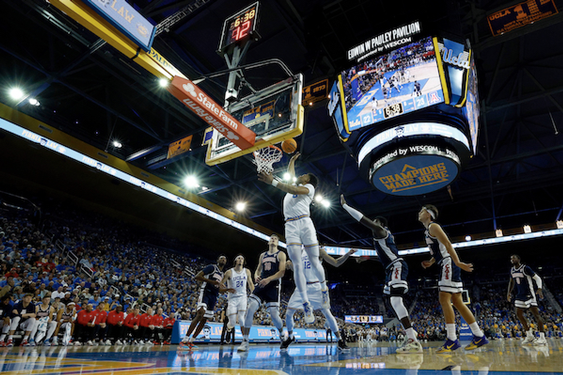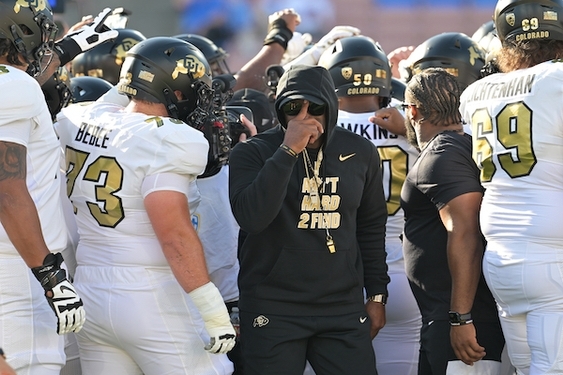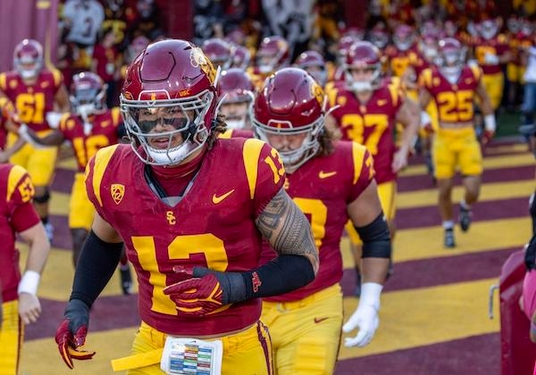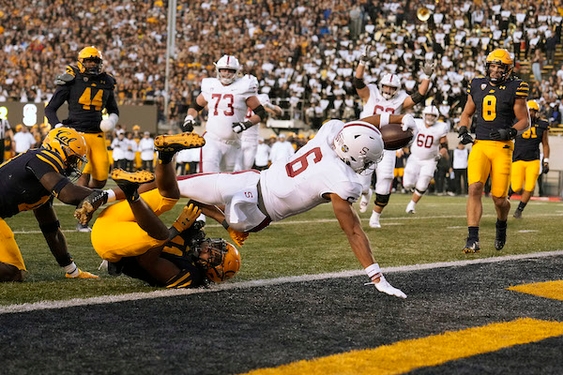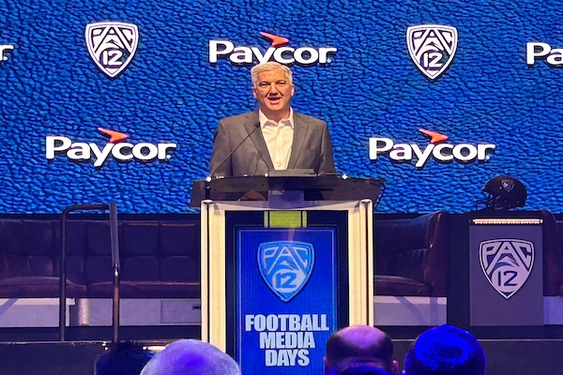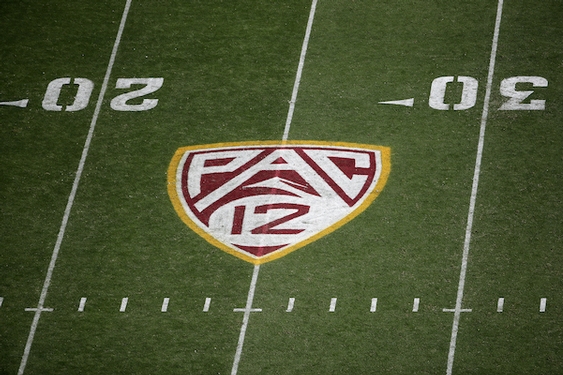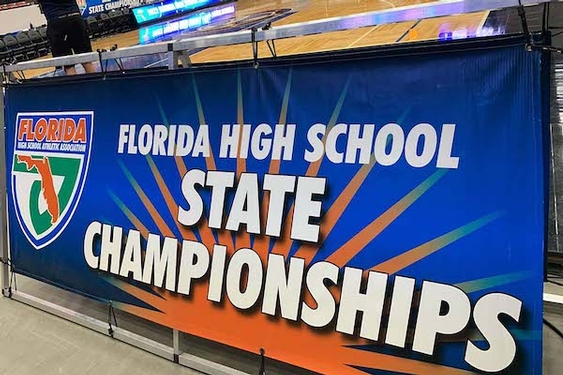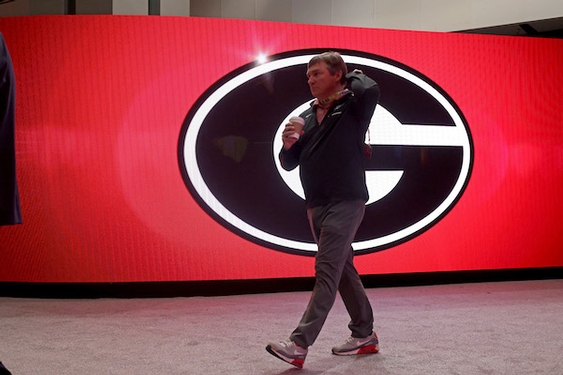Alabama quarterback Joe Willie Namath ran slowly onto the field with a pronounced limp. The many Tide fans among the 72,000 people in the stadium stood and roared their encouragement. Those folks knew what was at stake late in the fourth quarter of the Orange Bowl. The Associated Press and United Press International had declared Alabama the national champions in their final polls a month earlier and Alabama needed a win to confirm its title.
But 50 years ago this week, another group of people were on their feet watching the Orange Bowl game on New Year’s Day, 1965 — the Arkansas football team. The unbeaten and No. 2 ranked Razorbacks had defeated No. 6 Nebraska in the Cotton Bowl earlier in the day and then gathered around TV sets in their hotel. While AP and UPI had always issued their final rankings before the bowl games, the Football Writers Association of America and the Helms Athletic Foundation waited until after the holidays to publish their rankings. The Hogs knew what would happen if Alabama lost — Arkansas would gain a share of the championship honors. Woo pig sooie!
When Namath joined the huddle, his team trailed the No. 5 Texas Longhorns 21-17. But Alabama had momentum on its side.
Since halftime, Namath had led his team to a touchdown and a field goal and kept the Texas offense from crossing midfield. And moments earlier, lineman Jim Fuller had recovered a fumble by Longhorn quarterback Marvin Kristynik on the Texas 34-yard line.
Namath, who had not started the game because of a lingering injury to his right knee, quickly drove Alabama to the Texas six-yard line in three plays. The stadium crowd sensed that the Crimson Tide was about to roll to a go-ahead touchdown.
On first and goal, Namath sent fullback Steve Bowman up the gut, but the Texas defense held him to a short gain. Joe Willie twice more called Bowman’s number, but he fell short of the end zone each time. Fourth and goal on the one, and Texas called time out.
As the players took a knee in the muggy Miami night air, Pat Culpepper, a Texas assistant coach, turned away from the field.
“I glanced at the Alabama stands … and noticed every single person that I could see, from row one through the ones sitting under the light poles, was standing,” Culpepper wrote years later. “The noise was overpowering.”
Texas defensive coach Mike Campbell anticipated a quarterback sneak and called down from the press box to Culpepper with the play — “74 Goal Line.” The linemen were to submarine under the Tide’s offensive line and make space above for the Longhorn linebackers, led by All-American Tommy Nobis, to make the play.
At the snap, Namath, bad knee and all, drove off the right hip of center Gaylon McCollough. Texas linemen Diron Talbert, Frank Bedrick and Tom Currie did their jobs, and Nobis wrapped up Namath short of the goal line. Namath shouted, “Touchdown,” but the refs disagreed. Texas linebacker/tight end Pete Lammons told what happened next.
“Diron made the ‘Hook ’em Horns’ sign with his right hand by extending his forefinger and pinkie,” he said. “He then yelled, ‘Sorry, Joe, you missed by this much!’ ”
But the Texas goal-line stand wasn’t the end of the game. Alabama had two more possessions before the final gun. Lammons intercepted his second pass of the game to kill the first Tide drive.
Namath lost his magic in the second when he threw four straight incompletions.
Final score: Texas, 21-17.
And the Arkansas players went crazy in their Dallas hotel.
That year’s split national championship in college football began a decades-long movement toward this season’s first championship playoff, one scheduled in the coming weeks on Jan. 1 and 12. None of the folks in either the Orange or Cotton Bowls knew it at the time, but they witnessed games that helped change college football.
———
SHORT RANKINGS HISTORY
The game has a history of attempts to select the nation’s best college team. Early on, the big Eastern newspapers dominated the debate on who was number one until the 1920s when emerging Midwest powerhouse teams excited both the regional and New York papers. Frank Dickinson pioneered the first quantitative judgment in the 1920s with a mathematical model. In 1933, Parke Davis scribbled and scratched his way to a retroactive selection of the mythical national champions from 1869 through 1933.
At about the same time, AP sports editor Alan J. Gould began to develop a more systematic approach. In a 1980s oral history, Gould recalled that after a few weeks into the 1936 season, he asked sportswriters to send a telegram with their rankings to him in New York. “We got a substantial response,” he said of the first voting cycle. Gould had no designated panel of voters, but rather asked the AP state bureaus to solicit input from papers that were AP members.
After seven weeks of polling, AP distributed the final 1936 rankings on Nov. 30. Minnesota was No. 1, followed by LSU and Pittsburgh.
Gould later acknowledged that the formal poll was not just about establishing rankings.
“It was a case of thinking up ideas to develop interest and controversy between football Saturdays,” he told AP writer Herschel Nissenson in 1985. “Papers wanted material to fill space between games. This was just another exercise in hoopla.”
A rival poll began in 1950 when another major wire service of the day, United Press, recruited members of the American Football Coaches Association to rank teams. All voters were from major college teams, which prompted AP sports editor at large Darrell Christian to say in 2011: “Our voters don’t have the inherent conflict of interest that the coaches do.” UP became UPI in 1958, and USA Today currently runs the poll.
In the years since 1936, other college football organizations have offered their judgments, including FWAA and Helms.
———
1964 REGULAR SEASON
AP’s 1964 preseason ranking had Mississippi in the No. 1 spot, with Texas and Alabama in the top 10. By Week 3 of the season, Texas was No. 1, Alabama No. 3 and Arkansas No. 9.
On Oct. 17, Texas and Arkansas met in Austin for their annual Southwest Conference game. In the waning minutes of the game, the Longhorns drove 70 yards in 16 plays to score a touchdown to trail the Hogs, 14-13. With a minute and a half remaining, Texas coach Darrel Royal elected to go for a two-point conversion and the win. Defensive end Jim Finch hurried quarterback Kristynik’s throw to Hix Green and the attempt failed.
AP voters placed Ohio State atop the rankings after the Texas loss, but by Week 7, Notre Dame was No. 1. The Irish, which at the time did not play in bowl games, held that position until its final-game loss to Southern Cal.
Arkansas rose to the No. 4 spot after beating Texas and finished out its season with a remarkable five straight shutouts.
That year’s team and coaching staff included a passel of recognizable names. The legendary Frank Broyles was the head coach, and his staff included defensive assistant Johnny Majors, who went on to coach at Pittsburgh and Tennessee and join the College Football Hall of Fame. Barry Switzer was another assistant and he later won three national championships as the head coach at Oklahoma and an NFL title for Dallas.
Arkansas defensive back Ken Hatfield led the nation in punt returns in 1964 and later served as head coach at Air Force, Clemson and Rice. Two guards achieved considerable fame and fortune when they grew up — Dallas Cowboys owner Jerry Jones and Jimmie Johnson. The latter led University of Miami to the 1987 national championship and then, at Jones’s invitation, took over in Dallas and won two Super Bowls. A third interior lineman, Loyd Phillips, won the Outland Trophy two years later and is a member of the college Hall of Fame.
Alabama cruised through its season, even after Namath suffered knee ligament damage on Oct. 10 in the North Carolina State game. Backup Steve Sloan became the starter, but Joe came in for a series or two in key wins over Georgia Tech and Auburn. The Tide stayed high in the AP poll until the final ranking on Nov. 30 when the team supplanted Notre Dame as No. 1. Texas, the national champion the previous year, stayed at either No. 5 or No. 6 from week five until season’s end.
———
ARKANSAS MOVES UP
In the Cotton Bowl in Dallas on New Year’s Day, Arkansas, the Southwest Conference winner and No. 2 in the final AP poll, and Big Eight champ Nebraska took the field. The size of the No. 6 Nebraska players shocked the Hogs.
“They were huge,” Loyd Phillips said in an interview recently. “They were the biggest team we played all year.”
Ken Hatfield seconded that assessment in a phone interview, “They were humongous.”
The Razorbacks scored on their first drive on Tom McKnelly’s 31-yard field goal. The beefy Cornhuskers took the lead, 7-3, when Harry Wilson scored a few plays after he caught a Bob Churchich pass and ran to the Arkansas 18-yard line.
Nebraska held its slim lead until the fourth quarter. With the game clock at 9:21, Arkansas quarterback Fred Marshall started a series on his own 20-yard line with a 12-yard pass to end Jerry Lamb.
Four plays later, Marshall has his team on the Nebraska 43. After scrambling for 10 yards, Marshall hit Jim Lindsey at the 25, and the halfback ran to the Husker 5 for a gain of 28 yards. Two plays later, with just under five minutes to play, Marshall pitched out to running back Bobby Burnett, who scored from the three. McKnelly kicked the extra point for the 10-7 lead. Nebraska failed to score in the final four minutes.
“The coaches told us that we had done our part, and now it was up to Texas to beat Alabama,” Phillips recalled. “If they did, we would share in the national championship.”
The Alabama-Texas game was the first nighttime Orange Bowl game. On a soggy field left from a downburst during the day, Alabama’s backup quarterback started the game. Namath was available, and Coach Paul “Bear” Bryant acknowledged Joe’s limits at the time: “He moves like a human now. He did move like a cat.”
Texas scored first late in the first quarter when tailback Ernie Koy, Jr., took the handoff for a power sweep and ran 79 yards for a touchdown. After the Tide missed a field goal in the second quarter, the Longhorns responded with a 69-yard scoring pass from Jim Hudson to end George Sauer. Texas, 14-0.
With 10 minutes left until halftime, Coach Bryant made a change. Pat Culpepper later recalled watching from the sideline as Bryant walked to the hash marks with an arm on Joe’s shoulder pads.
“That picture I will never forget — the huge coach in a rain slicker and a fedora hat, alongside Namath, with the Alabama stands exploding in excitement behind them.” With his knee heavily taped, Joe ran to the huddle as the Alabama band played the school fight song — “Crimson Tide, Roll Tide, Roll Tide!”
Alabama quickly scored as Namath showcased his passing skills. Culpepper, a former Longhorn player who coached at the college level for 12 years, later described what he saw on the field.
“To this day, I have never seen a quarterback as accurate or with as quick a release as Namath on that New Year’s night,” he said.
Sports author and historian Randy Roberts, coauthor of Rising Tide, was also impressed with Namath that night. He called the performance a “Judy Garland, star-is-born moment.”
In the second half, Namath led his team to the brink of victory late in the fourth quarter, but the Texas goal line stand put an end to Alabama’s unbeaten season. And tarnished the Tide’s AP and UPI national titles.
Namath was named the game’s MVP, and as his team left the field, he told Coach Bryant that the refs had made a bad call on his quarterback sneak.
“If you can’t jam it in from there without leaving any doubt,” Bear said, “you don’t deserve to win.”
In Dallas, a herd of happy Hogs partied late into the night. In recalling that night, former Arkansas defensive tackle Jim Williams said the team’s 22-game winning streak was as great an achievement as the national championship.
“We hit bottom the year before after losing to SMU,” said Williams, a past chairman of the Cotton Bowl. “It started with a win over Texas Tech in the last game of the 1963 season, and lasted until the team lost to LSU in the Cotton Bowl after the 1965 season.”
———
IRONIES
After Alabama and Arkansas split the 1964 national championship, AP delayed its final rankings in the following season in order to encompass the bowl games. This flew in the face of the prevailing opinion within the college football establishment, which treated the games as exhibitions.
“They are a reward for the players,” Ohio State coach Woody Hayes had said, and thus shouldn’t be included in national rankings.
Also at hand in 1965 was the fact that the six top teams were slated to play in bowl games. They included the three undefeated schools — Michigan State, Arkansas and Nebraska. However, the first two lost their bowl games, and Alabama beat Nebraska, 39-28. AP picked the Tide as national champion.
According to Joe Posnanski, writing in the ESPN College Football Encyclopedia, AP’s switch caused a controversy in college football.
“There was uproar about the sportswriters placing such an emphasis on bowl games, and it was so intense that the AP went back to voting before the bowl games for the next two years,” he said.
By 1968, AP did another flip-flop. According to Posnanski, “the system looked so silly that the AP permanently went back to the post bowl vote.” Regardless, UPI continued to conduct its final poll of football coaches before the bowl games until 1974.
Bill Little, the long-time sports information director at Texas, said in a recent interview that Notre Dame influenced the timing of the final AP poll during the period in which the university didn’t accept bowl bids — the 1925 season through the 1969 season.
“There was a strong belief that Notre Dame’s decision not to participate in the bowl system affected the national champion selection,” Little said. “The premise was that including a bowl game could unfairly benefit other teams since Notre Dame couldn’t have that in its body of work. So both wire services — the AP and UPI — concluded their polls at the end of the regular season.”
The juxtaposition of this year’s inaugural playoff for the national championship and the messy situation 50 years ago is rich with irony and coincidence.
Jeff Long, the Arkansas athletic director, is chairman of this year’s playoff selection committee. Former Arkansas guard Jerry Jones is hosting the championship game in the Cowboys AT&T Stadium. Alabama is in the hunt this year just as the team was a half century ago. And then there’s the New York Jets roster for Super Bowl III, the game in which Namath “guaranteed” a win.
The day after the Orange Bowl loss, Namath signed a record-breaking, three-year contract with the Jets for $427,000. In his fourth season, “Broadway Joe” led the Jets to the Super Bowl III win by beating the Baltimore Colts, 16-7. His teammates that day included four former Texas Longhorns — Pete Lammons, George Sauer, Jim Hudson, and John Elliot. Sauer caught eight passes on the day, Lammons, two.
“Us Texas guys would always rib Joe about that Orange Bowl game,” Lammons said. “I reminded him that I learned how to catch his passes when I made the two interceptions in the bowl game.”
———
Michael K. Bohn is a nonfiction author and his latest book will be released in February — “Presidents in Crisis: Tough Decisions inside the White House from Truman to Obama.”
Distributed by Tribune Content Agency, LLC




